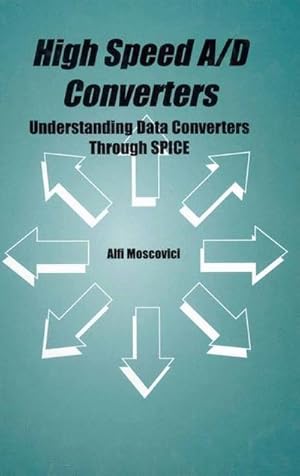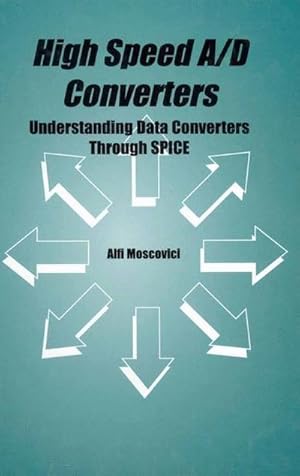MOSCOVICI, ALFI (2 Ergebnisse)
Produktart
- Alle Produktarten
- Bücher (2)
- Magazine & Zeitschriften
- Comics
- Noten
- Kunst, Grafik & Poster
- Fotografien
- Karten
-
Manuskripte &
Papierantiquitäten
Zustand
- Alle
- Neu
- Antiquarisch/Gebraucht
Einband
Weitere Eigenschaften
- Erstausgabe
- Signiert
- Schutzumschlag
- Angebotsfoto
Land des Verkäufers
Verkäuferbewertung
-
High Speed A/D Converters : Understanding Data Converters Through SPICE
Verlag: Springer US, 2000
ISBN 10: 079237276XISBN 13: 9780792372769
Anbieter: AHA-BUCH GmbH, Einbeck, Deutschland
Buch
Buch. Zustand: Neu. Druck auf Anfrage Neuware - Printed after ordering - The Analog to Digital Converters represent one half of the link between the world we live in - analog - and the digital world of computers, which can handle the computations required in digital signal processing. These devices are mathematically very complex due to their nonlinear behavior and thus fairly difficult to analyze without the use of simulation tools. High Speed A/D Converters: Understanding Data Converters Through SPICE presents the subject from the practising engineer's point of view rather than from the academic's point of view. A practical approach is emphasized. High Speed A/D Converters: Understanding Data Converters Through SPICE is intended as a learning tool by providing building blocks that can be stacked on top of each other to build higher order systems. The book provides a guide to understanding the various topologies used in A/D converters by suggesting simple methods for the blocks used in an A/D converter. The converters discussed throughout the book constitute a class of devices called undersampled or Nyquist converters. The tools used in deriving the results presented are: TopSpice® by Penzar - a mixed mode SPICE simulator - version 5.90. The files included in Appendix A were written for this tool. However, most circuit files need only minor adjustments to be used on other SPICE simulators such as PSpice, Hspice, IS_Spice and Micro-Cap IV; Mathcad 2000 - Professional by Mathsoft. This tool is very useful in performing FFT analysis as well as drawing some of the graphs. Again, the mathcad files are included to help the user analyze the data. High Speed A/D Converters: Understanding Data Converters Through SPICE not only supplies the models for the A/D converters for SPICE program but also describes the physical reasons for the converter's performance.
-
High Speed A/D Converters : Understanding Data Converters Through SPICE
Verlag: Springer US, 2013
ISBN 10: 1475774648ISBN 13: 9781475774641
Anbieter: AHA-BUCH GmbH, Einbeck, Deutschland
Buch
Taschenbuch. Zustand: Neu. Druck auf Anfrage Neuware - Printed after ordering - The Analog to Digital Converters represent one half of the link between the world we live in - analog - and the digital world of computers, which can handle the computations required in digital signal processing. These devices are mathematically very complex due to their nonlinear behavior and thus fairly difficult to analyze without the use of simulation tools. High Speed A/D Converters: Understanding Data Converters Through SPICE presents the subject from the practising engineer's point of view rather than from the academic's point of view. A practical approach is emphasized. High Speed A/D Converters: Understanding Data Converters Through SPICE is intended as a learning tool by providing building blocks that can be stacked on top of each other to build higher order systems. The book provides a guide to understanding the various topologies used in A/D converters by suggesting simple methods for the blocks used in an A/D converter. The converters discussed throughout the book constitute a class of devices called undersampled or Nyquist converters. The tools used in deriving the results presented are: TopSpice® by Penzar - a mixed mode SPICE simulator - version 5.90. The files included in Appendix A were written for this tool. However, most circuit files need only minor adjustments to be used on other SPICE simulators such as PSpice, Hspice, IS_Spice and Micro-Cap IV; Mathcad 2000 - Professional by Mathsoft. This tool is very useful in performing FFT analysis as well as drawing some of the graphs. Again, the mathcad files are included to help the user analyze the data. High Speed A/D Converters: Understanding Data Converters Through SPICE not only supplies the models for the A/D converters for SPICE program but also describes the physical reasons for the converter's performance.



